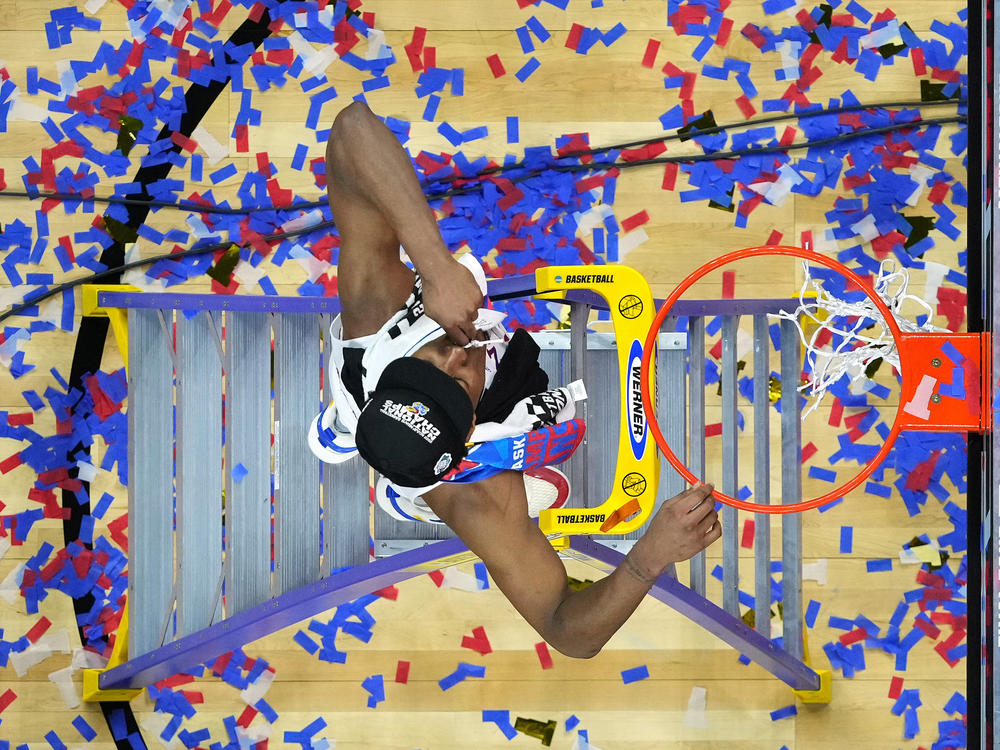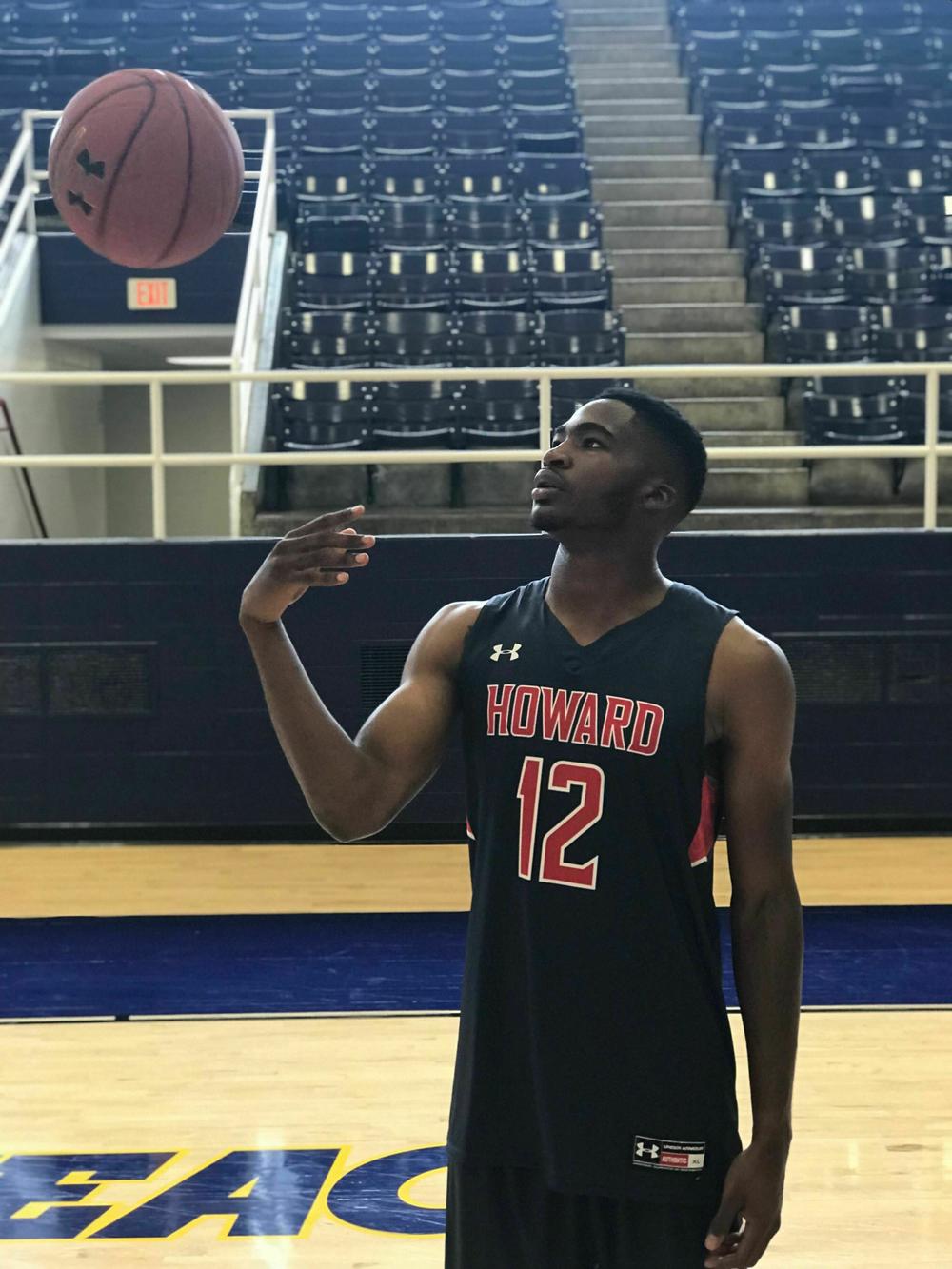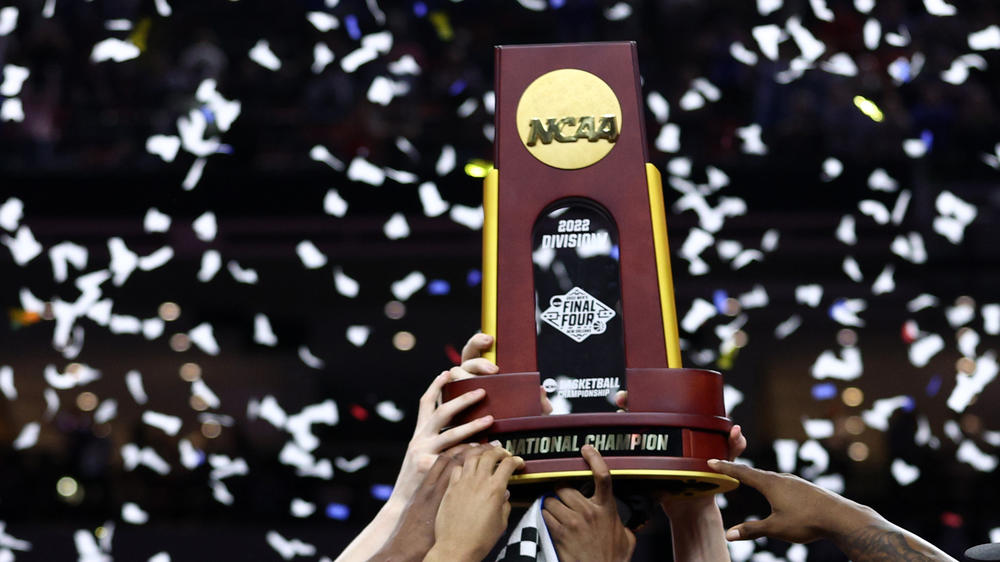Section Branding
Header Content
An ode to March Madness, where you can always expect the unexpected
Primary Content
Updated March 16, 2023 at 3:39 PM ET
Whether you're a huge fan of college basketball or just a casual spectator, March Madness is the most exciting time of the year.
From the highly anticipated matchups to the screaming fans, insane buzzer beaters and unpredictable outcomes, March Madness lives up to its name. If you lose one game then you're out, so every matchup has high stakes. Fans also embrace school pride to the max as their support gets broadcasted nationally. The thrilling and electric energy of the NCAA Division 1 Men's Basketball Tournament puts fans on the edge of their seats play after play. With the loudest arenas around the country, the tournament captures the spirit of competition, excitement and tradition.
The tournament is made up of 68 teams from universities from all across the country. After each match the winning team moves onto the next round, which are known for names like the Sweet Sixteen, Elite Eight and Final Four. Then we're down to the final two teams, and a winner is crowned.
As a former college basketball player, I know firsthand how hard the players work to stay in the tournament for as long as possible. Student athletes spend countless hours striving for success on and off the court, and it can be a bit of a challenge balancing schoolwork and the dedication that comes with playing basketball. Many sacrifices get made — their time, personal finances, social lives, health and wellbeing, and even career opportunities. But in the end, the love for the game makes it all worth it.
But for the players, it's more than just a game. The NCAA tournament creates national exposure, increasing the chances of sponsorships and endorsements based on the success of players and teams. And even helping some players transition into their professional careers.
The history behind March Madness
Dating back to the first tournament in 1939, Henry V. Porter used the term March Madness as a reference to the game of basketball during his time as a high school official. Years later during CBS coverage of the tournament in 1982, Brent Musburger brought the term to life, and the rest was history.
Although today we see a bracket of 68 teams, the tournament started off with 8 schools that accepted, with a division between east and west and single-game elimination rules. The NCAA took over the tournament in 1940, and the number of teams continued to expand over the years. The most recent change came in 2011 where the tournament added the First Four, where four teams compete for an opportunity to make it to the first round of the tournament. This birthed a 68-team bracket.
Before bracket picking became popular, fans weren't as enthusiastic — there was a period where you knew who was going to win. A team like UCLA who won 11 championships in 12 years and holds the record for most championships could have easily been picked. In the late '70s at a bar in New York, people gathered around and filled a blank bracket with predictions for the winner of each game. Each win would gain you points, and whoever had the most points would win the pool. By 2006, more than 150,000 people were filling out brackets with entry's coming from all over the world. The internet created opportunities for bracket games. It's now estimated that Americans fill out at least 70 million brackets and bet $2 billion each tournament, according to the American Gaming Association.
Some of the biggest upsets happen from underdog teams. The University of Maryland, Baltimore County owns the biggest upset in March Madness history. UMBC was one of the lowest-seeded teams and beat top-ranked UVA in 2018, busting brackets all around the country. Even some of the biggest moments are bound to happen from teams like Duke, who holds the largest comeback to beat Maryland after being down 22 points. Even having a legendary coach like Mike "Coach K" Krzyzewski, who has the most NCAA wins by a single coach. Shining moments are guaranteed to happen each year, and it is a special thing watching it live, especially if your school or favorite team is having a good run.
There's also big money involved. TV rights for the games earned the NCAA a whopping $850 million last year, and universities who make the tournament and win games can get millions in prize money. Players now can sign endorsement deals that allow them to capitalize off their popularity.
Why you should watch — and fill out a bracket
Whether or not you're a fan of college basketball, you should give March Madness a chance simply for its sense of community. Millions of people share the experience of filling out brackets and following along with matchups, making it a fun way to connect with friends, family and even coworkers. After recovering from a global pandemic and the tournament having restrictions, this year feels like things are back to normal. And who doesn't love a friendly rivalry?
There are many teams to keep an eye on this year such as Alabama, UConn, Iowa, USC, Gonzaga and Memphis. However, some of the lower-ranked teams make the most unexpected runs, causing brackets to crash. If you're a first-time watcher, you can expect tons of excitement with unexpected outcomes and Cinderella stories from underdog teams around the country. If you miss it, you could miss out on witnessing history.
You can watch games live on CBS and fill out your own bracket. Happy March Madness — may the odds be ever in your favor.
What are you really into? Fill out this form or leave us a voice note at 800-329-4273, and part of your submission may be featured online or on the radio.
Copyright 2023 NPR. To see more, visit https://www.npr.org.



